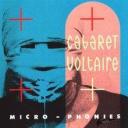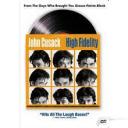This morning I came across an article regarding the Pope, who has decided that seven deadly sins aren’t really enough. In moving the Church with modern times and thinking, he’s added a few more to the list. Now missing from that list, from an ardent collector’s perspective, is removing a collectable from its packaging. Opening the box: bad. NRFB – Never Removed From Box: good.
To remove, or not to remove – it’s not so much a question as temptation. For many serious collectors, the value of a collectable plunges the instant you peel back that little holographic sticker on the box’s lid. It’s so tempting, to take that collectable out of its cellophane and twist-tie prison, to let it feel fresh air and be held by a real person. In some ways, it’s like buying a new car.
Your heart’s in your mouth as you pen to paper that shiny new auto. It has just four kilometres on the clock – the obligatory once-or-twice-around-the-block by the quality control person at the factory). There aren’t any dings on the paintwork, the wheel rims are unaltercated by curbs, the tyres are oh-so-black. That heady new car smell emanates from the inside when you open the door. The firm, untorn upholstery grips you as you reciprocate with the steering wheel. Bob the car salesman hands you the key to your $33,000 purchase, shuts the door (it latches with a reassuring, solid thud), and you draw a deep breath. You turn the key and the engine roars into life, snapping at the rev counter to keep up. Oh, yeah. You ease your new baby across the footpath, out onto New Proud Owner Street. CLANG!
That’s the sound of SEOW. In that fraction of a second when the two front tyres touch the road, SEOW occurs. It stands for Spontaneous Evaporation Of Worth. Your $33,000 car just lost $7,000 in value. Just like that. You see, if you put the car into reverse and drive it back onto the lot with a doubt in your heart, everything changes. Bob the car salesman, who minutes earlier complimented your snappy tie or how your dress really brings out the highlights in your hair, is now telling you that the car is no longer new, but used. They’re not worth as much as new cars, he explains with the patience of a saint. The car’s certain je ne sais quoi has disparu. However as a favour to you (his friend), he generously offers to buy the car back for $26,000, despite the ‘lesser condition’ it’s now in.
You didn’t do anything to cause the Evaporation, like bumper-kiss a pole, or spill your morning coffee over the passenger seat. Nope. But you did commit a cardinal sin. In driving that brand new car off the lot, you did the equivalent of removing a collectable from its box. Shame on you. Like the genie from the bottle, you released value from the purchase.
OK, but who actually buys a new car and doesn’t drive it? And every year at Christmas time, children around the world get millions of presents, things that may in time become collectables. On this day, they tear into these presents with the fervour of media smelling a scandal. Off comes the wrapping paper. Who cares that it’s expensive, shiny, and your favourite colour? That Mum put a co-ordinated rosette on top? No one. Onto the next layer. The box! Hurrah! Rip goes the top. Toss the instruction sheet next to the crumpled up wrapping paper where it won’t get lost. Remove the cellophane! The twist-ties! Curse the polystrene chips flying around like snowflakes, and anything else that gets in the way. Finally – the present! Ah….. satisfaction.
In a few hours when Mum and Dad clear up, the packaging disappears and in a way, so has some of the history associated with it. Some of the language and phrases of the time printed on the box, how the item was packaged, it’s all part of the item’s history. This adds immensely to an item’s worth in later years. Some toys and other collectibles from as far back as the fifties or sixties have retained their virgin status, but are extremely rare. Like the new car – imagine suggesting to a child on Christmas Day that they shouldn’t remove the toy from its packaging, because it’ll be worth a lot more in thirty years’ time. How well would that be received? And more worrying – what kind of a parent would give such a gift and then instruct them NOT to open it ever – they could look but not touch?
Yet some collectors swear by NFRB as the pristine pinnacle of collecting. It just doesn’t get any better.
Keeping a toy in NRFB status rather than SFBLO (Set Free By Loving Owner) can actually be detrimental though. Dolls are probably the best documented case of when packaging and archiving turn bad. The materials used to box them aren’t acid free and aren’t usually designed to last for decades. They can damage dolls and their costumes, as can other factors like mould, rubber bands, or other devices used to entomb the figurine. One final note from an NFRB collector of Fate / Saber – tinged with a little sadness – is that her prized collection of figurines simply looks like shelves of boxes in a toy store – “they never get to come out and play”. 
Damned if you do, damned if you don’t. NFRB or SEOW… which are you?






